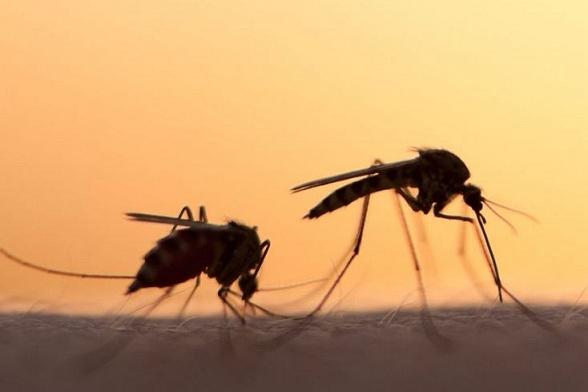NOT TOO long ago, diamond profits and taxes were seen as the most single biggest source of Namibia’s state revenue.
Now, many would tell you that the main source of revenue is actually import duty from the Southern African Customs Union (Sacu), which is only partially right. By 2014 Sacu revenue for Namibia’s tax coffers was estimated at 37% of total government income. This is down from the peak of 47% in 2007, but Namibia remains highly dependent on Sacu income.
A customs union like Sacu exists when several countries get together and decide to set one common rate of tariff on all goods coming in from outside the member states. They then pool the tariff revenue on goods coming in from say the USA, the EU or China and the normal way to distribute this revenue is based on what is called the ‘destination principle’. If 5% of total Sacu imports went to Namibia then Namibia would get 5% of revenues.
But Sacu has one of the strangest revenue sharing formulas of any customs union in the world. Sacu tariff revenues are distributed among the five members based on the share of intra-Sacu imports. At the end of each year the five Sacu members get together and decide what was imported the previous year within their borders.
As a result, the smaller states – Botswana, Lesotho, Namibia and Swaziland (BLNS) – get most of the revenue because they import almost everything from South Africa while South Africa imports very little from the BLNS states.
Depending on the year, about 80% of Sacu customs revenue go to BLNS. South Africa, which has 53 million people and dominates the bulk of Sacu’s foreign imports, gets less than 20%. That is why the South African treasury, unions and much of civil society hate this arrangement, that was inherited from the apartheid era to shore up the colonial system, because they are in effect transferring about N$20 billion a year to BLNS.
From the Namibian perspective it means we are subsidised to import and, thus, discouraged from producing for export. And on this basis Sacu is extremely successful because BLNS states have bloated governments but produce nothing, allowing South Africa to produce virtually everything that is consumed in the entire region.
But suddenly something very new has happened in Namibia’s trade with Botswana. From being a very minor trading partner, Botswana has suddenly become Namibia’s biggest export destination at somewhere close to N$11 billion in 2014. Those exports are almost entirely Namibia’s diamonds.
In the past, diamonds from Namibia used to go to De Beers head office at Charterhouse in London and sold to De Beers sightholders there. But a 2011 marketing agreement between De Beers and Botswana meant that De Beers moved its trading sites from London to Gaborone. Diamonds produced in the ‘De Beers zone’ i.e Botswana, Namibia, South Africa and Canada would be traded out of Gaborone.
For Botswana this agreement was the crowning glory of its diamond value-addition policy. At last Botswana is the ‘go to’ place if you want mined diamonds and Batswana are rightly proud of this development. This is certainly Botswana’s rightful place as the world’s largest raw diamond producer.
Namibia as a good neighbour, that also seeks to add value to its raw diamonds, should rightfully support Botswana’s beneficiation efforts. But the flip side is that Namibia and the other Sacu members are paying a subsidy, an actual premium, to Botswana for every dollar of Namibian, South African and Lesotho diamonds that flow into Botswana because of the intra-Sacu imports revenue sharing formula.
The subsidy stems not from a commercial trade relationship where the parties are trading with Botswana because they wish to but as a result of an agreement between De Beers and Botswana. It is symptomatic of everything that is wrong with the Sacu revenue sharing formula. Rather than encouraging intra-regional trade, the Sacu formula creates perverse distortions and incentives in behaviour.
From the perspective of the government revenue Namibia should be opposed to any exports to its Sacu neighbours – whether it is weaners to South Africa or diamonds – because this decreases Namibia’s Sacu revenue, which encourages imports rather than production to sell to outsiders.
One way to deal with this is simply by modifying the Sacu revenue sharing formula. Sacu members should agree to a modification of revenue sharing that excludes the intra-Sacu trade, especially of items such as diamonds.
Otherwise, the country is caught up in a trap. Namibians are as rich and comfortable as they are only because South Africa subsidises them to import goods from their bigger neighbour. In other words, the Namibian government is paid by Pretoria not to create big industries and thus to keep Namibia’s children unemployed.
Every time a Namibian farmer exports a weaner to South Africa or Namdeb exports diamonds to Botswana, the Namibian treasury gets less money. This is what economists correctly call a ‘perverse incentive’ and it surely must come to an end.
• Roman Grynberg is professor of economics, University of Namibia. The views expressed are entirely his own.
Stay informed with The Namibian – your source for credible journalism. Get in-depth reporting and opinions for
only N$85 a month. Invest in journalism, invest in democracy –
Subscribe Now!







